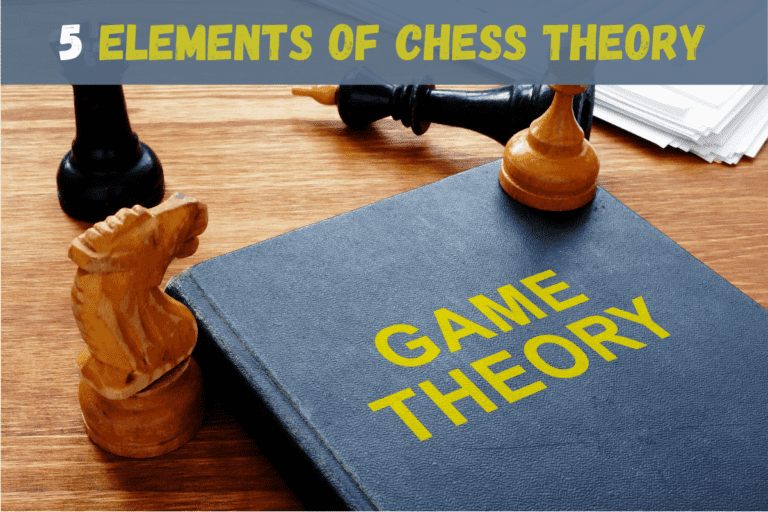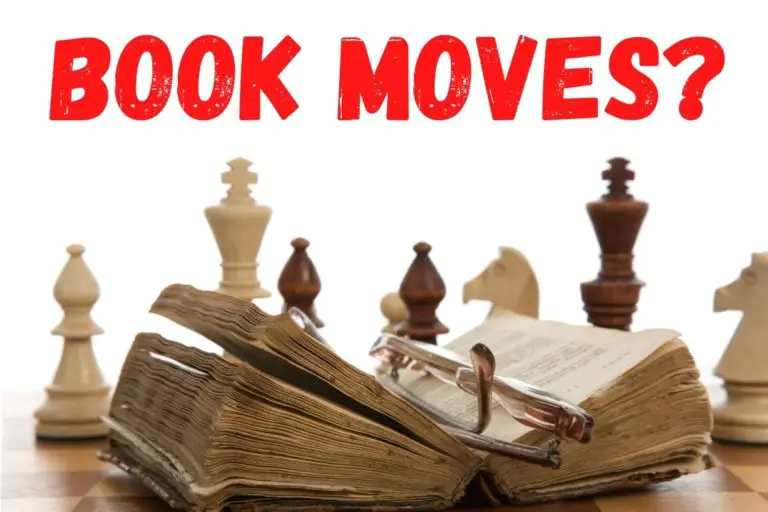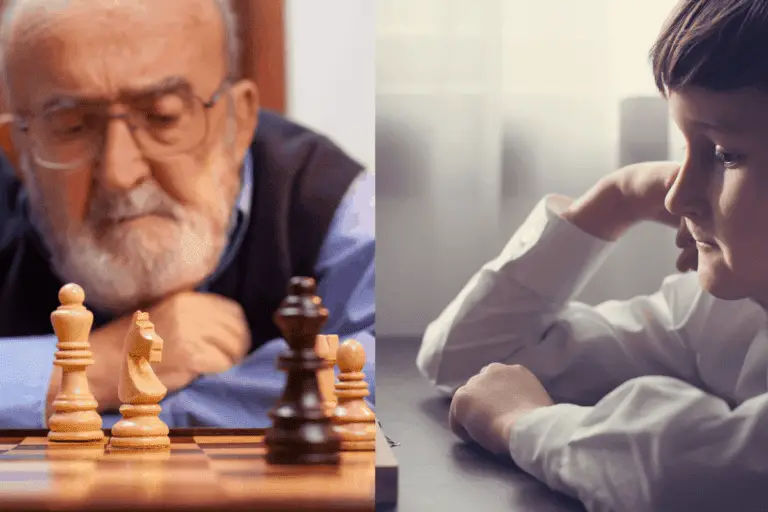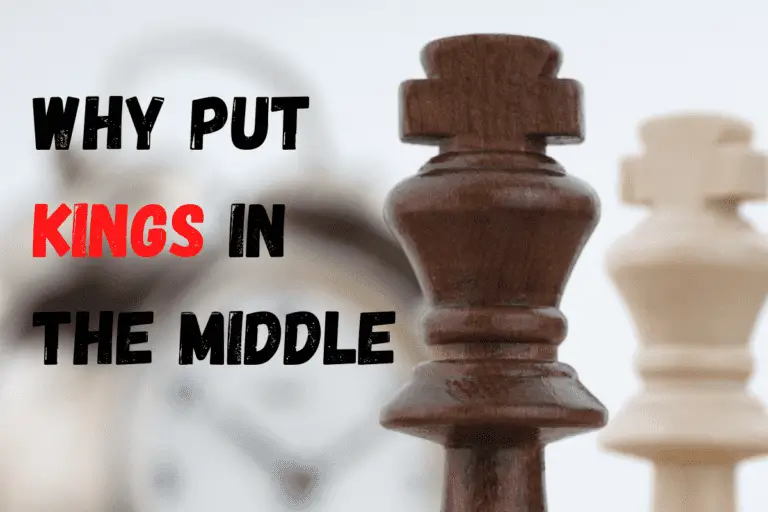The Point Value of Each Chess Piece: What It Means
⭐⭐⭐ Take 8 minutes to read and improve your chess game ➡️ : This article was first published on, and is Copyright of Chessquestions.com
The point value of each chess piece is not something we often think about, indeed, how much a chess piece is worth in points has no direct effect on the game. Whilst these values are not used in a game, they can still affect how you play and what decisions and moves you make. This article will go through each chess piece and its assigned point values to help clarify any confusion there may be around this topic.
Chess Piece Point Values
- King – n/a
- Queen – 9 points
- Rook – 5 Points
- Bishop – 3 Points
- Knight – 3 Points
- Pawn – 1 Point
The value of each chess piece in points is generally accepted as 9 points for a queen and 5 for the Rooks, then 3 points each for the Bishops and Knights and each pawn is worth a single point – The King is not assigned any point value at all. Despite this, points are not used in chess games.
Let’s delve further into this subject, it can help you in terms of making decisions on piece trades, sacrifices, and more within your chess-playing, and we will also look at how some grandmasters have assigned a different set of points per piece, and how the pawn can increase in value during the game to be worth as much as a queen.
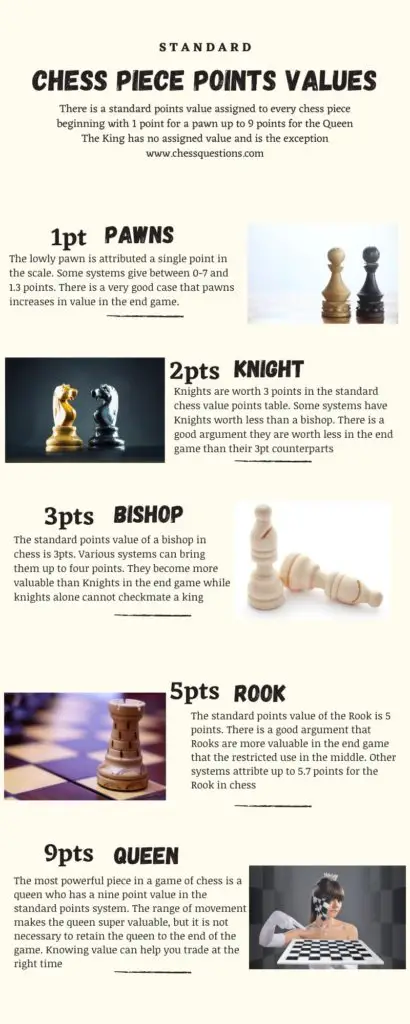
Chess Pieces Worth is not a New Concept
The standard valuation of each chess piece is not a modern concept having first been adopted as far back as the 18th century based on earlier mathematical work from a century earlier.
It is plainly obvious that each piece in a game of chess has different abilities, strengths, and weaknesses, which provides an excellent base to assign a relative point value to each.
What confuses matters is as the game progresses, different positions achieved across the board those points become less relative to the moment in time.
For instance a bad bishop, and good bishops. A dark square bishop trapped by the placement of other pieces, often its own, can not attain the same value in terms of worth and menace on the board as the light-squared bishop should it be free to roam and form part of an attack strategy.
Likewise, any piece pinned to the king for any length of time becomes virtually worthless to the player with that piece, but far more valuable a capture to the opponent looking to gain material advantage.
So we can safely assume that the point value of each chess piece will be a dynamic element at all times, but a base has to be had, which is what standard chess piece values are.
The Relative Value of Chess Pieces
As we will see later in this article, the values are given above as standard chess piece values for a game of chess are not set in stone or even officially recognized, rather they are generally accepted but regardless of the system being used, each piece is valued relative to the strength of the other pieces on the board.
This provides a form of math to calculate the worth of a sacrifice, or exchange of pieces when the game begins in earnest after the opening.
Chess engines will be programmed with a set value per piece, which, without going into the incredible mathematical depths, may change at different points and positions of the game, but overall to assign a relative position of strength to either the white or black pieces at any given moment within the game.
This is what is used to create the balance bar on chess.com when you analyze a previous game and can see the various points of a game and the advantage or disadvantage you may have had at any given time after or prior to a move.
Does Chess Piece Value Have Anything to Do With Centipawn Value?
Roughly these values are tangibly linked to the Centipawn value of each chess piece, however, that is an entirely different conversation and a little deeper than we will be going here, So please take a look at the dedicated article on what Average Centipawn Loss is by hitting the link below.
Chess Piece Values Will Change as The Game Progresses
If you have any experience of playing chess already you will be aware that some pieces become more powerful as you enter the endgame, and others less so.
You may already be making these decisions in terms of which pieces you are happy to trade to enter the endgame and those you wish to keep as more effective attacking elements based on how the board is looking.
It is widely accepted that as a game progresses so a Knight may become less effective and a bishop moreso. Whilst they may both begin a game of chess attributed as 3 points value, it might be argued that a Knight may lose half a point and a bishop gain the same amount.
Rooks are certainly more effective in the endgame than middlegame action, and if there were any final proof required as to how the value of chess pieces will change as a game progresses, take a look at passed pawns threatening promotion to a queen.
Is that passed pawn still worth only one point? Certainly not in your opponent’s eyes, as a great deal of his attention, and his pieces attention be focussed on trying to prevent that worthless one point pawn becoming a mighty nine pointer Queen
There are comparisons of various pieces that can be made in terms of worth once we get to the end game.
Two Rooks for instance, are with 2 x 5points and therefore 10 – If we take one Queen (9pts) and one Pawn (1pt) we have comparable points value. Indeed, working in the endgame may be very even, but if that pawn is on the 7th rank protected by the Queen, it’s probably considered a little more worthy than 1 by both sides at that moment in time.
Go back to the opening and it would be considered a Rook and Two pawns, (Total value 7 points), are in fact worth less than Two bishops (total 6 points)
You see how the points value of each piece in chess, is more about a general value than actual importance within the game, with possibly the exception of the Queen, the most powerful piece and thus most valuable too.
Why Chess Piece Valuation Doesn’t Work
It is not so much that chess piece valuation doesn’t work as it is that the value of each piece or combination thus are not set dependant on the particular moment of the game whether that be the opening, middlegame, or endgame.
Taking into consideration closed positions or open positions is going to have a degree of effect on the value of the piece at the given moment.
One can use the valuations to assess the validity of exchange in the middle game.
Example:
A chess player may consider a trade of a Knight and a bishop for a single pawn and a rook a fair trade given the combined value of each pair is 6 points. From a basic mathematical perspective, not considering the chess game board position this could be a fair call. However, in reality, applied to a position on the board this will almost certainly never be the case despite the rook being the more valuable piece in the standard figures.
In most cases, the knight and bishop are going to be worth more in terms of the position of the game than the opponent losing one pawn and a rook.
There are many alternative chess piece value systems that attribute a great value to a bishop and knight than to a rook and pawn.
Then there are the passed pawn and connected pawn values. Start getting into a position of having an extra pawn in a prominent position and those general standard values, as we have seen, are out of the window.
If you have already somehow traded or blundered your queen but you have a pawn on the verge of promotion while still in possession of some minor pieces, that pawn, at that moment in time, is probably your most valuable asset on the board.
Alternative Chess Piece Valuation Systems
There are many different variations on the value of chess pieces in a game mostly based around differing values for minor pieces. Even former World Champion and one of the greatest Grandmasters of all time, Garry Kasparov, has offered a view on the values, which backs up the scenario above of a Knight and Bishop being more worthy than a Rook and a Pawn. He valued the bishop upon the Knight and in fact brought the rook down from 5 to 4.5pts.
When it comes to Major pieces, Bobby Fischer had his own idea (didn’t he always) and even gave The King an infinite value, which makes sense given the game is over should it be unable to avoid capture.
Table of value
How Much is a Pawn Worth? (0.7 to 1.3 Points)
Pawns are valued at 1 point in the standard chess values, but some alternatives provide them with various scores between 0-8 points and 1.4 points at a starting position based on their relative positions either in the central squares or the flanks. They increase in value in the end game
How much is a Knight Worth? (2.4-4 Pts)& Bishops (3-4 Points)
Knights are given a 3 point standard valuation at the start of a game, but many would argue that their worth diminishes as the game progresses toward the end game as alone they are unable to checkmate the enemy King.
Indeed, you can not checkmate with a pair of Knights with 6 points whereas you can with a similarly scored pair of bishops.
How Much is a Rook Worth? (5-5.7 points)
In chess a rook is assigned a 5 point value in the standard table of chess piece values, however, some systems value them up to seven points. They are more worthy in the end game than in the opening given the restricted position and movement which improves as the game opens up.
Most latterly AlphaZero has valued the Rook at 5.63!
How Much is a Queen Worth? (9 Points)
No doubt the queen is the most powerful attacking piece on the chessboard and as such is provided with a 9 point value. There is no argument as to the importance of the value of the Queen, however, do not let the additional benefits of possessing a queen on the board prevent you from trading off the queen at the right moment in the game.
How Much is a King Worth?
The King has no point value in a game of chess as it can not be captured nor traded, thus its points value is undefined in the standard chess piece value chart. Bobby Fischer famously provided the King an ‘infinite’ value given its importance, whilst chess engines often attribute 200 points.
Conclusion
Whilst it is interesting to consider the various values of each chess piece on the board, one should not get too hung up on their values as in independent positions at various points of a game, a trade of greater points might even be in your favor. However, the pints system does provide a good base of consideration when assessing what you want to retain on the board and give up at various stages of a game.

